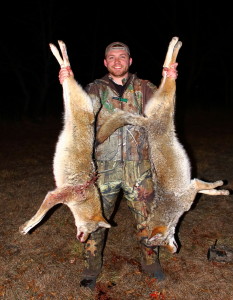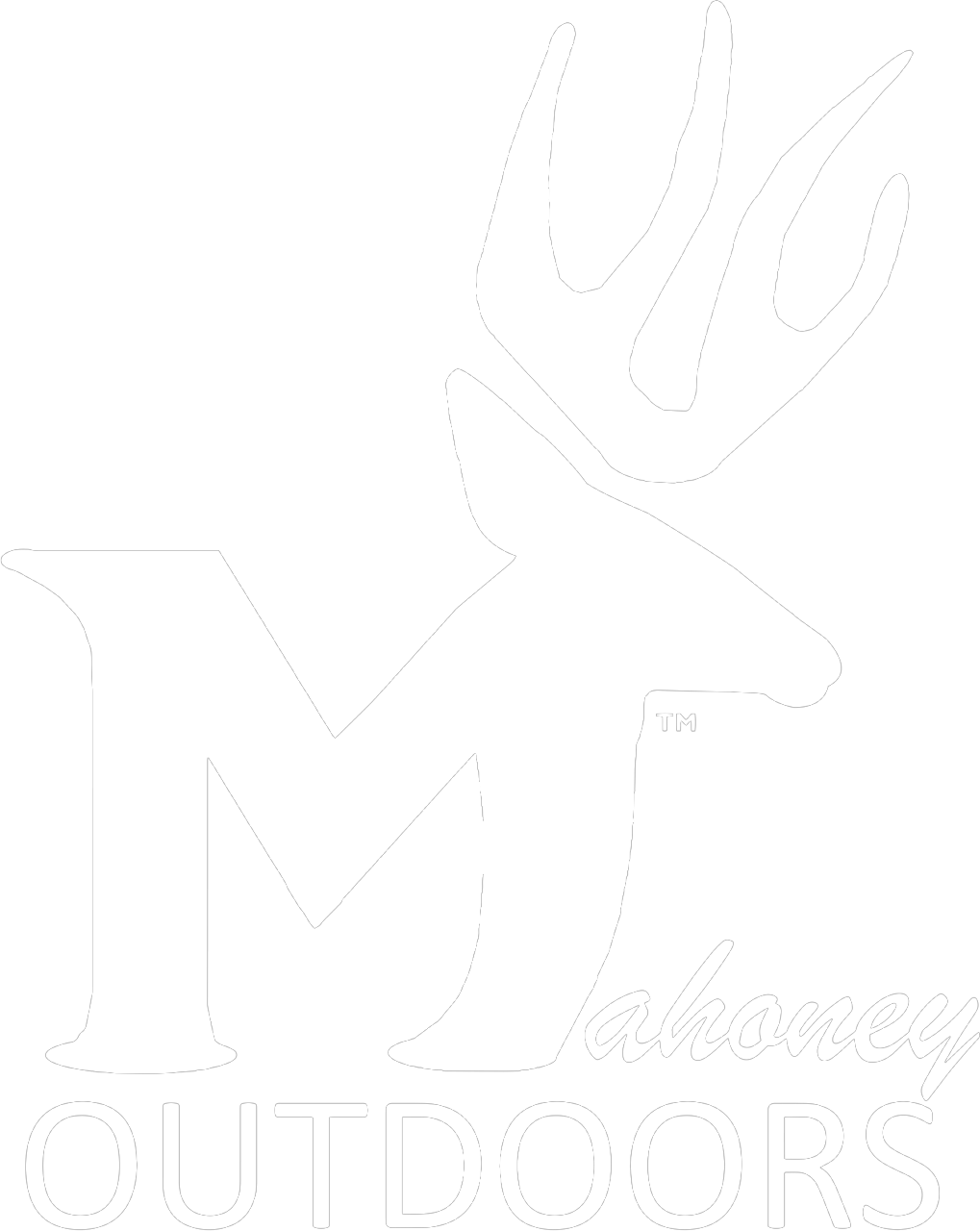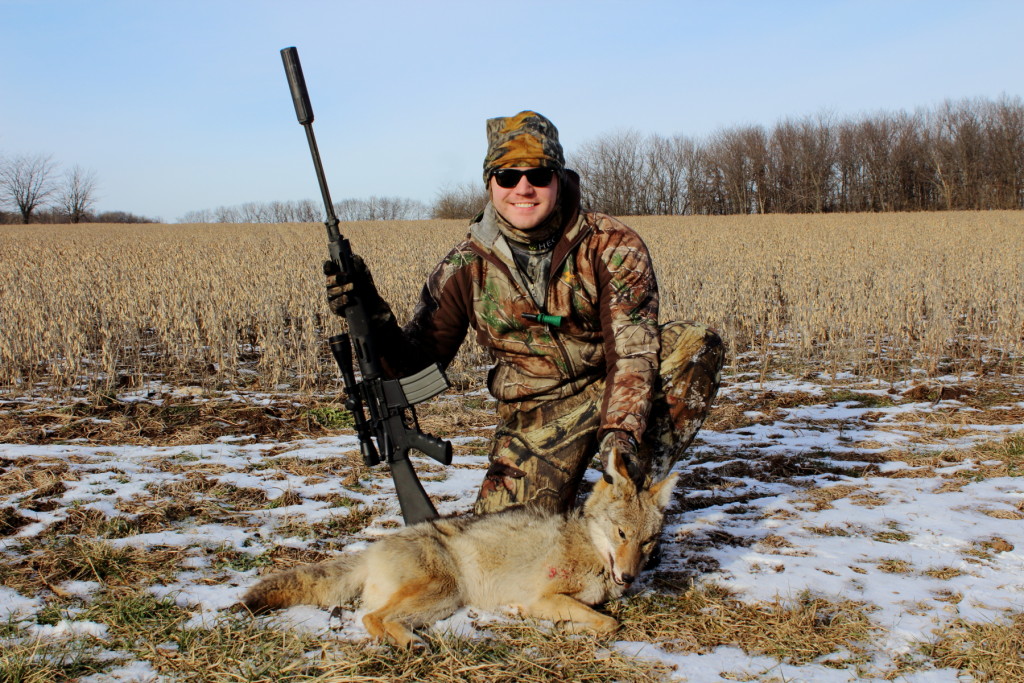One of the most important lessons I’ve learned about managing whitetail deer is that it isn’t just the deer themselves you have to manage. There are many other factors that must be a priority. Habitat and food resource management are big ones, but predator control is also vitally important. Unfortunately, many people don’t seem to recognize how important it really is.
Did you know predators, namely coyotes, are responsible for the destruction of anywhere from 50-70% of fawns in your area each year? The QDMA has many great articles showcasing studies that validate those estimates. In addition, high concentrations of coyotes have a general overall negative effect on deer health – because the deer are too stressed out to eat and function normally! The drastic effect of coyotes is appalling, and scary quite frankly.
Think about all those buck fawns who possess fantastic genes from the king daddy roaming in your woods. Because of coyotes and other predators, chances are they won’t even make it past the first 10 days of their lives.
If you hadn’t already, I bet you’re now starting to realize you need to make predator control a serious priority.
So where do you start?
Your Options
- Trap predators yourself – requires much expertise, time, effort, and monetary expenses to procure all your traps. Steel foothold traps can run as little as $10 a piece, but the best ones can be much more. Snares and restraints are much cheaper alternatives. Trapping can be very rewarding and fun if/when you begin to have success. Your effectiveness could be minimal until you gain significant experience.
- Hire a trapper – requires little time and effort on your part, but can be expensive depending on how much you pay the trapper per predator he removes. Keep in mind, coyotes are like mice. Where there’s one, there’s A LOT more. If you’re lucky, maybe you can work out a deal where instead of paying him a removal fee per animal, he keeps all fur for himself to sell. If you find the right guy, hiring a trapper could perhaps be most effective for predator removal.
- Hunt predators yourself – requires little expertise, but equally as much time as trapping yourself. Hunting coyotes and other predators is no cost to you if you plan to just sit and wait over predator travel corridors. However, I recommend purchasing an electronic call like a FoxPro, which can be fairly expensive up front. You can get other brands under $100, but you’ll want to go with one of the premiere FoxPro or Primos models, which can run between $200-600 or more. Quality electronic calls will allow you to call predators in without needing to be an expert caller yourself. The electronic call does the work for you. Hunting predators in this way is an absolute blast and is very effective when you follow the right steps (which will be explained in Part 2).
 So what do you do? In an ideal world, you would use a combination of the three. But if you’re an average joe like me, you want to spend the least amount of money while having the most amount of fun possible that still allows you to achieve effective predator control. Option 3 works for me while I slowly learn to become more effective at trapping.
So what do you do? In an ideal world, you would use a combination of the three. But if you’re an average joe like me, you want to spend the least amount of money while having the most amount of fun possible that still allows you to achieve effective predator control. Option 3 works for me while I slowly learn to become more effective at trapping.
Accessories Needed
- Predator calls – I recommend looking into FoxPro. I have an older model called the Firestorm. It is unbelievable. Some of their best products are a little pricey, but you can still get a good call for between $100-$200. It’s worth the price of admission. You’ll also want to make sure you have a few hand and mouth calls as well. Primos has several good options.
- Rifle and/or shotgun – I hunt in the midwest so I don’t need something that can shoot for hundreds of yards. I use an AR-15 in .223 caliber with a suppressor from D9 Firearms. It’s perfect for anything out to 200 yards, which is about the furthest shot I normally have anyways. A 12 gauge with coyote loads is very effective 50 yards and in. I’ve heard stories of 50+ yard shots as well.
- Shooting Sticks – If you’re not in an elevated blind with good rests, shooting sticks are a must. Resting your gun on your knees and on the edge of a tent blind seems to create issues in my experience.
- Warm clothing – This is a given. My favorite time to hunt coyotes is the end of December through March. January and February are typically peak breeding months for coyotes, so if you’re going to make an all day event out of hunting them, you need to dress warm. Be sure to layer up and make sure whatever camo you have matches the terrain you’re hunting in.
Final Thoughts
You now have a basic understanding of your options for predator control. You know the bare essentials you’ll need to be successful. In part 2, I’ll go more in depth to the strategy I employ when going after coyotes and other predators. Stay tuned!



